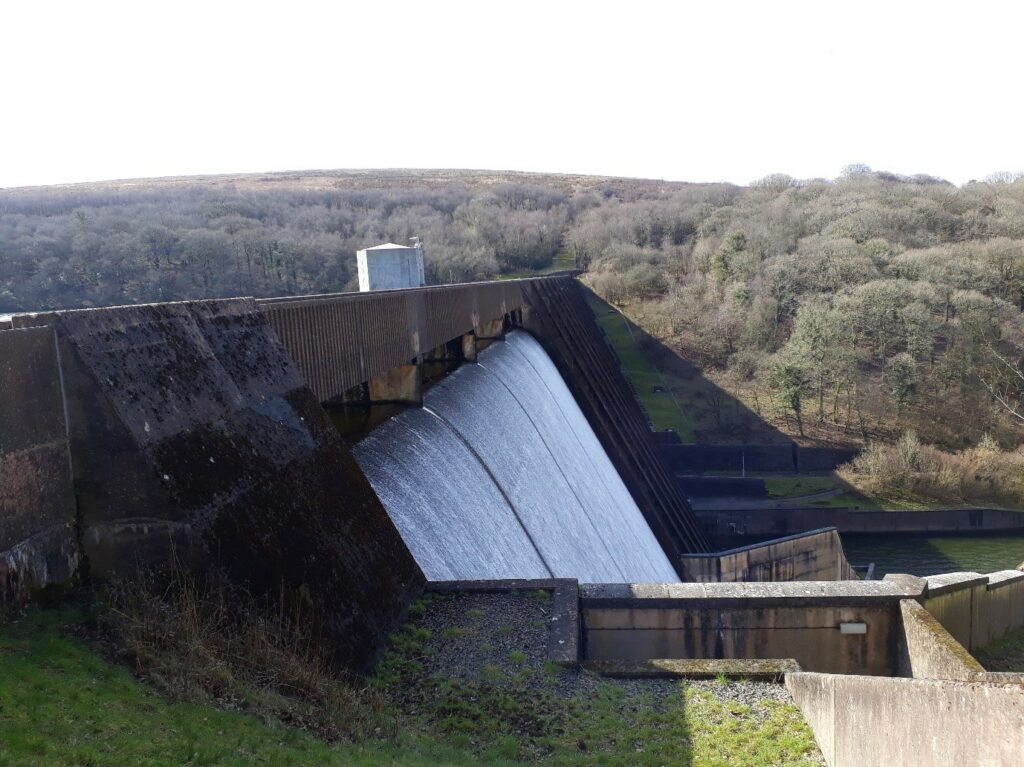What is the value of seasonal forecasts for water resources management?
Contributed by Andres Peñuela, Christopher Hutton and Francesca Pianosi
Improved skill of predictions for the North Atlantic circulation and Northern Europe have motivated an increasing effort to improve seasonal weather forecasting systems. Seasonal weather forecasts are expected to be useful for a range of purposes, including to improve the management of water resource systems. To contribute to the assessment of seasonal forecasts value for water managers, we ran a simulation exercise investigating how they could integrate seasonal forecast products in their reservoirs operations procedure. For this purpose, we set-up a simulation-optimisation model that takes rainfall and temperature hindcasts provided by the ECMWF seasonal forecasting system SEAS5 to produce dynamical streamflow predictions (DSP) over the past ten years. The model generates hydrological forecasts of reservoir inflows and simulates how reservoir operators could have optimally used this piece of information to increase water resource availability while reducing operational costs. Here we report five key lessons that we learnt from this study.
The Wimbleball reservoir in the South-West of England. The reservoir is part of a larger storage system to support local domestic demand. Additional drought resilience is enabled by a pumping station that can be operated in Winter to increase reservoir storage and ensure meeting the Summer demand. Skilful seasonal forecasts could help anticipate the Summer hydrological conditions and decide whether pumping is needed or not.
1. To bias correct or not to bias correct? This is the question
In our application, linear scaling bias correction of precipitation and temperature forecasts did not improve the average forecast skill and it actually deteriorated it in exceptionally dry years. The original meteorological forecasts showed relatively good skill before bias correction. These results point at a possible intrinsic contradiction in the very idea of bias correcting based on historical data. In fact, by pushing forecasts to be more alike historical observations, bias correction may reduce the ‘good signal’ that may be present in the original forecast in years that will indeed be significantly drier (or wetter) than historical data. It is these more extreme years that are of most interest for water resources management.
2. Not all forecast errors have the same impact on the forecast value
While we could not find an obvious and significant improvement of forecast skill after bias correction, we found instead a clear increase in forecast value. This was explained by the fact that bias correction changed the sign of the forecasting errors – from a systematic underestimation of inflows to a systematic overestimation – and in the context of our decision-making problem, overestimation proved less problematic than underestimation. An implication of this result is that not all skill scores may be equally useful and relevant for water resource managers.
3. The forecast value is reduced if uncertainty is not well characterised
Generally, we found that the use of seasonal forecasts can improve the efficiency of reservoir operations, but only if the forecast uncertainty, characterised here by an ensemble, is explicitly considered. We also found that the performance improvement is maintained also when the forecast ensemble size is reduced up to a certain limit. Future studies could look at whether a ‘minimum representation of uncertainty’ can be found to reduce computation burden while ensuring the most effective use of forecasts for water resource management.
4. ESP remains a hard-to-beat benchmark
In our study we also simulated the use of ensemble streamflow predictions (ESP) as an alternative to dynamic streamflow predictions (DSP). ESP are generated by running the hydrological model against a repetition of weather conditions observed in the past during the forecast time-horizon. We found that, while bias corrected DSP provided the highest value in our case study, ESP remains a hard-to-beat reference in terms of both skill and value. These results open up a discussion on whether the use of DSP is justified with respect to a possibly simpler-to-use product such as ESP. While weather forecast centres are increasingly facilitating access to their forecast datasets, their preparation (including bias correction) and use still needs a considerable level of expertise.
5. Using forecasts should be made easier to maximize their value
If we want to extract all the value from seasonal weather forecasts we need further research towards better understanding the skill-value relationship, as well as make the use of seasonal weather forecasts easier. To this end, we have developed an open-source toolbox, called iRONS, that implements typical reservoir modelling tasks and facilitates the incorporation of seasonal weather forecasts by providing tools to download seasonal weather forecast data from the ECMWF website, apply bias correction and generate reservoir inflow forecasts. iRONS also includes a set of interactive Jupyter Notebooks that can be used to explore in a friendly and engaging way the use of ensemble forecasts in multi-criteria decision-problems. The Notebooks can be accessed from a browser via this link.
Find out more here.

0 comments